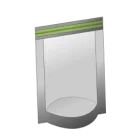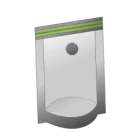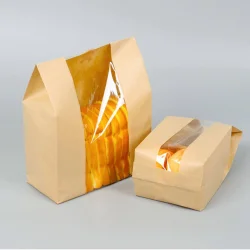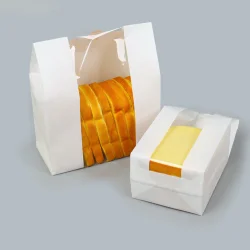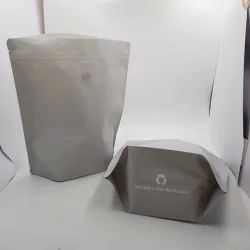Smart and Sustainable Packaging Materials for Food Containers, Pouches, Packing Peanuts, and More
Different types of packaging materials serve various purposes based on the product they protect, preserve, and present. They shield against moisture, air, light, and contamination, preserving freshness and shelf life, and ensure hygienic storage for food and beverages, preventing spoilage and contamination. Packaging materials facilitate transport, storage, and usage for both consumers and retailers. Single-use and resealable packaging materials help in maintaining product quality over time. Packaging materials are also used to display essential details such as ingredients, expiration dates, and usage instructions.
Plastic packaging is commonly used for food containers, plastic wraps, bottles, and pouches. It’s lightweight, durable, and cost-effective. Paper and cardboard packaging is used for cartons, paper bags, and corrugated boxes. It’s eco-friendly and widely used for branding. Biodegradable & compostable packaging supports sustainability and reduces environmental impact. Plastic food containers are widely used for storing, transporting, and preserving food products. These are lightweight, easy to transport, and often microwavable for reheating. Plastic food containers help maintain freshness by preventing exposure to air, moisture, and contaminants. These provide a clean and sealed environment, reducing the risk of contamination, and are generally cheaper than alternatives like glass or metal containers.
Paper packaging is a widely used, eco-friendly alternative to plastic, offering sustainability, versatility, and effective product protection. It is commonly used in food, retail, and shipping industries. It’s biodegradable, recyclable, and made from renewable resources. Paper packaging is easily printable, allowing for branding, logos, and product details. It’s easier and cheaper to transport than heavier materials like glass or metal, and helps maintain freshness while allowing airflow, which is ideal for baked goods and dry foods.
Benefits of Paper Packaging
Sustainable – Reduces plastic waste and is easily recyclable.
Customizable – Can be printed, embossed, or laminated for branding.
Versatile – Used for food, retail, e-commerce, and industrial packaging.
Safe for Food – Certain types (like greaseproof paper) prevent oil leakage.
Compostable Options – Many paper materials decompose naturally, reducing landfill waste.
Packing peanuts for fragile, delicate, or oddly shaped items
If you need to pack fragile, delicate, or oddly shaped items, our packing peanuts are what you need They help prevent breakage, reduce movement, and absorb impact. Packing peanuts are used primarily for protecting fragile items during shipping and transportation. They act as a cushioning material inside packages, preventing damage by absorbing shock and filling empty spaces. Items that don’t fit standard packaging (e.g., decorative figurines, handcrafted items) require loose-fill protection, which can be provided by packing peanuts.
When the product is smaller than the box, packing peanuts helps prevent movement by filling the voids. If you pack multiple items in one box, packing peanuts ensures that products don’t collide with each other, reducing damage risk.
Here are some key advantages of packing peanuts:
Protects Fragile Items – Cushions delicate products like glassware, ceramics, and electronics from impact.
Reduces Vibration Damage – Prevents movement inside the box, reducing the risk of breakage.
Fills Empty Spaces – Ensures that items stay securely in place during shipping.
Minimizes Shipping Costs – Extremely lightweight, reducing overall package weight.
Fits Any Package – Can be poured into any box to provide instant cushioning.
Polystyrene Peanuts Are Water-Resistant – Useful for items that need to stay dry.
At Entrepouch, we provide smart and high-performance packing materials that are extremely lightweight with superior insulation properties for temperature-sensitive products. We also provide different types of pouches, such as:
Zippered Pouches – Resealable for convenience in food storage (snacks, coffee, pet food).
Spouted Pouches – Ideal for liquid products like juices, sauces, and baby food.
Vacuum-Sealed Pouches – Extends the shelf life of food by removing air.
The bottom line
Our flexible pouches, such as resealable and vacuum-sealed variants, provide lightweight, space-saving, and cost-effective alternatives to traditional rigid packaging. Innovations like smart packaging with oxygen-absorbing films and temperature-controlled insulation further enhance product safety and freshness.




